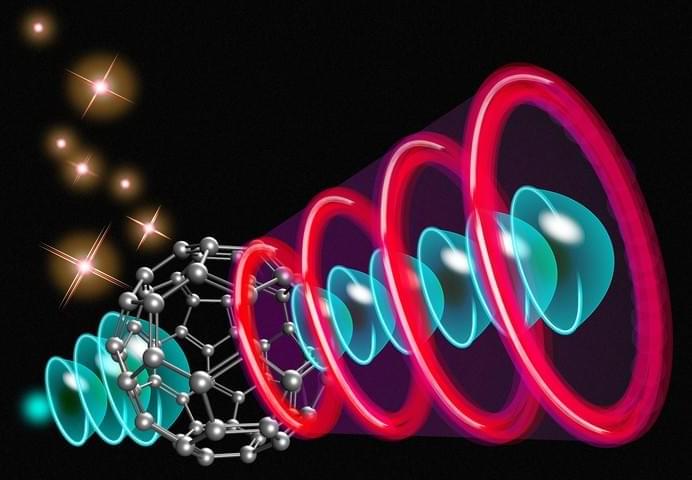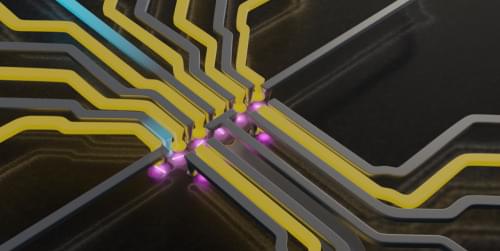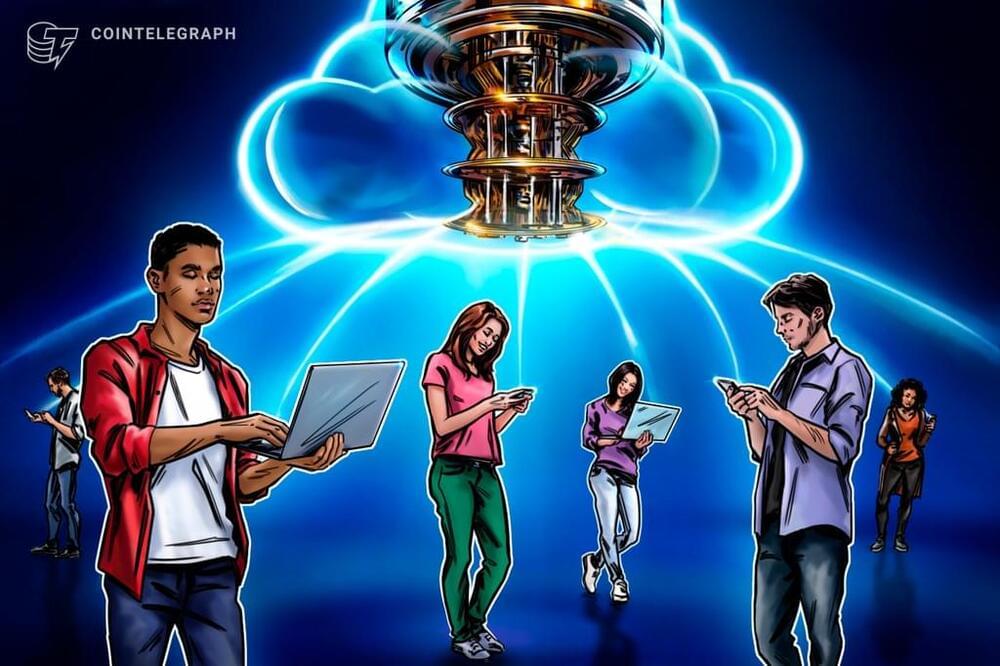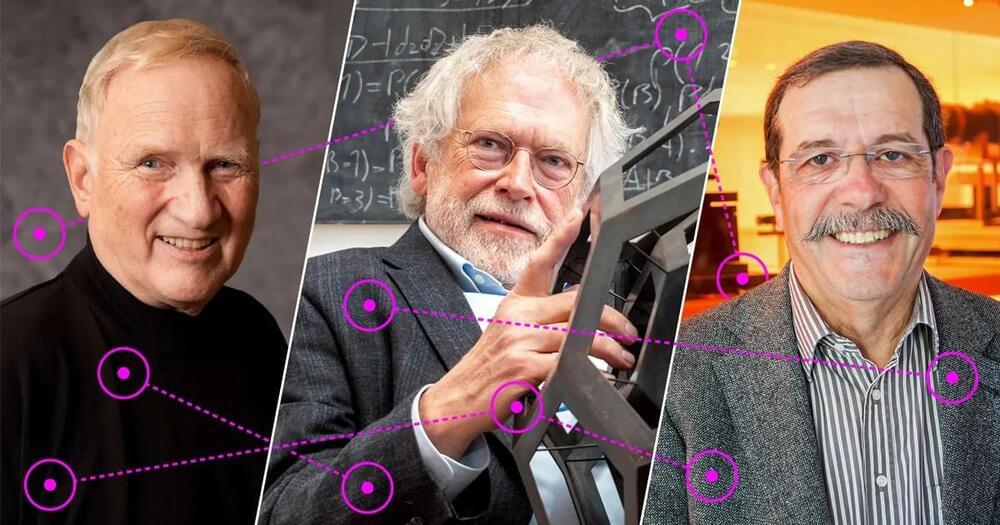Quantum ‘turnout’ device has a switching speed four to five orders of magnitude faster than that of current solid-state transistors.



Australian scientists have recreated a famous experiment and confirmed quantum physics’s bizarre predictions about the nature of reality, by proving that reality doesn’t actually exist until we measure it — at least, not on the very small scale.
That all sounds a little mind-meltingly complex, but the experiment poses a pretty simple question: if you have an object that can either act like a particle or a wave, at what point does that object ‘decide’?
Our general logic would assume that the object is either wave-like or particle-like by its very nature, and our measurements will have nothing to do with the answer. But quantum theory predicts that the result all depends on how the object is measured at the end of its journey. And that’s exactly what a team from the Australian National University has now found.

Since the recent announcements of OpenView’s ChatGPT, Google’s Bard, and Baidu’s ChatBot, the industry has been in a frenzy advancing Generative AI products and solutions. Brainy Insights estimates that the generative AI market will grow from USD $8.65 billion in 2022 and reach USD 4188.62 billion by 2032. This translates to over 36% CAGR making generative AI one of the next hottest areas to elevate AI innovations. The software segment will account for the highest revenue share of 65.0% in 2021 and is expected to retain its position over the forecast period.
What is Generative AI?
Generative AI is a form of AI that produce various types of content including text, imagery, audio and synthetic data. The recent buzz around generative AI has been driven by the simplicity of new user interfaces for creating high-quality text, graphics and videos in a matter of seconds. Although not a new technology, the introduction of generative adversarial networks, or GANs which is a type of machine learning algorithm has advanced the innovations in using this form of AI.
COQUI — Generative AI will Revolutionize Voice
The exciting news is that former Mozillians have just raised $3.3M for Coqui, generative AI speech synthesis for all creatives. Prior to founding COQUI, the CEO Kelly Davis led the Mozilla Machine Learning Group, which focused on speech technology. Before that, he worked at the Max Plank Institute for Gravitational Physics and also did his Ph.D. work in Superstring Theory.
The very word ‘quantum’ makes people’s imaginations run wild. But chances are you’ve fallen for at least one of these myths.


Research using a quantum computer as the physical platform for quantum experiments has found a way to design and characterize tailor-made magnetic objects using quantum bits, or qubits. That opens up a new approach to develop new materials and robust quantum computing.
“With the help of a quantum annealer, we demonstrated a new way to pattern magnetic states,” said Alejandro Lopez-Bezanilla, a virtual experimentalist in the Theoretical Division at Los Alamos National Laboratory. Lopez-Bezanilla is the corresponding author of a paper about the research in Science Advances.
“We showed that a magnetic quasicrystal lattice can host states that go beyond the zero and one bit states of classical information technology,” Lopez-Bezanilla said. “By applying a magnetic field to a finite set of spins, we can morph the magnetic landscape of a quasicrystal object.”

Quantum cloud computing makes quantum computing resources available to organizations, academics and other users through cloud technology.
Cloud-based quantum computers function at greater speeds, with higher computing power than conventional computers, because they employ the principles of quantum physics when solving complex computational problems.
Different types of quantum computers exist, such as quantum annealers, analog quantum simulators and universal quantum computers. Quantum annealers are considered the least powerful among quantum computers but work well to solve optimization problems. Analog quantum simulators, on the other hand, are powerful systems that can solve physics and biochemistry problems.

The physicists Alain Aspect, John Clauser and Anton Zeilinger have won the 2022 Nobel Prize in Physics for experiments that proved the profoundly strange quantum nature of reality. Their experiments collectively established the existence of a bizarre quantum phenomenon known as entanglement, where two widely separated particles appear to share information despite having no conceivable way of communicating.
Entanglement lay at the heart of a fiery clash in the 1930s between physics titans Albert Einstein on the one hand and Niels Bohr and Erwin Schrödinger on the other about how the universe operates at a fundamental level. Einstein believed all aspects of reality should have a concrete and fully knowable existence. All objects — from the moon to a photon of light — should have precisely defined properties that can be discovered through measurement. Bohr, Schrödinger and other proponents of the nascent quantum mechanics, however, were finding that reality appeared to be fundamentally uncertain; a particle does not possess certain properties until the moment of measurement.
Entanglement emerged as a decisive way to distinguish between these two possible versions of reality. The physicist John Bell proposed a decisive thought experiment that was later realized in various experimental forms by Aspect and Clauser. The work proved Schrödinger right. Quantum mechanics was the operating system of the universe.

Retrocausality is a theory in quantum science that reflects on how the future can affect the past. The future affecting the past sounds like something straight out of a sci-fi film (and it’s been in a few of these, too), but it’s also an actual theory based on quantum physics, and more scientists are starting to buy into it.
At the end of of 2022, we released a film offering a reply to the fine tuning argument for God from leading physicists and philosophers of physics. This included both those that doubt there is any fine tuning and those that think there is but it can be solved by naturalistic means.
Subsequently astrophysicist Luke Barnes and philosopher Philip Goff offered their criticism of our criticism. Here we have assembled some of our original talking heads to review their criticism and offer a reply, defending the original position that fine tuning argument for God does not work.
Our original film can be found here: https://www.youtube.com/watch?v=jJ-fj3lqJ6M
Luke Barnes and Philip Goff’s reply is here: https://www.youtube.com/watch?v=QJYWkqOzUQ0&t=4036s and we also recommend this video on Bayes theorem on the Majesty of Reason Channel: https://www.youtube.com/watch?v=o1MdtyLL3Uw&t=4423s.
Our panel consists of Graham Priest, Distinguished Professor of Philosophy at The Graduate Center, City University of New York, well known for his work in logic especially non classical logic, the philosophy of mathematics and science and Buddhist philosophy.
Barry Loewer, who is the distinguished professor of philosophy at Rutgers University and director of the Rutgers Center for Philosophy and the Sciences. Barry specialises in philosophy of science and philosophical logic and the foundations of quantum mechanics, statical mechanics and probability.
Dan Linford who is one of the rising stars in the intersection of the philosophy of physics and philosophy of religion. He did his Phd in philosophy, under Paul Draper and had well known atheist cosmologist Sean Carroll and theistic fine tuning advocate Rob Collins on his thesis committee. He’s now doing a postdoc at the University of Nebraska and recently authored the book Existential Inertia and Classical Theistic Proofs with Joe Schmidt.
Niayesh Afshordi who is an astrophysicist and cosmologist, he’s Professor at the University fo Waterloo and faculty at the Permitter Institute for Theoretical physics. Niayesh won the silver medal at the world physics Olympiad as a teenager, won 1st prize the The Buchalter Cosmology Prize and works in a variety of fields from early universe cosmology, black holes, dark energy and quantum gravity.